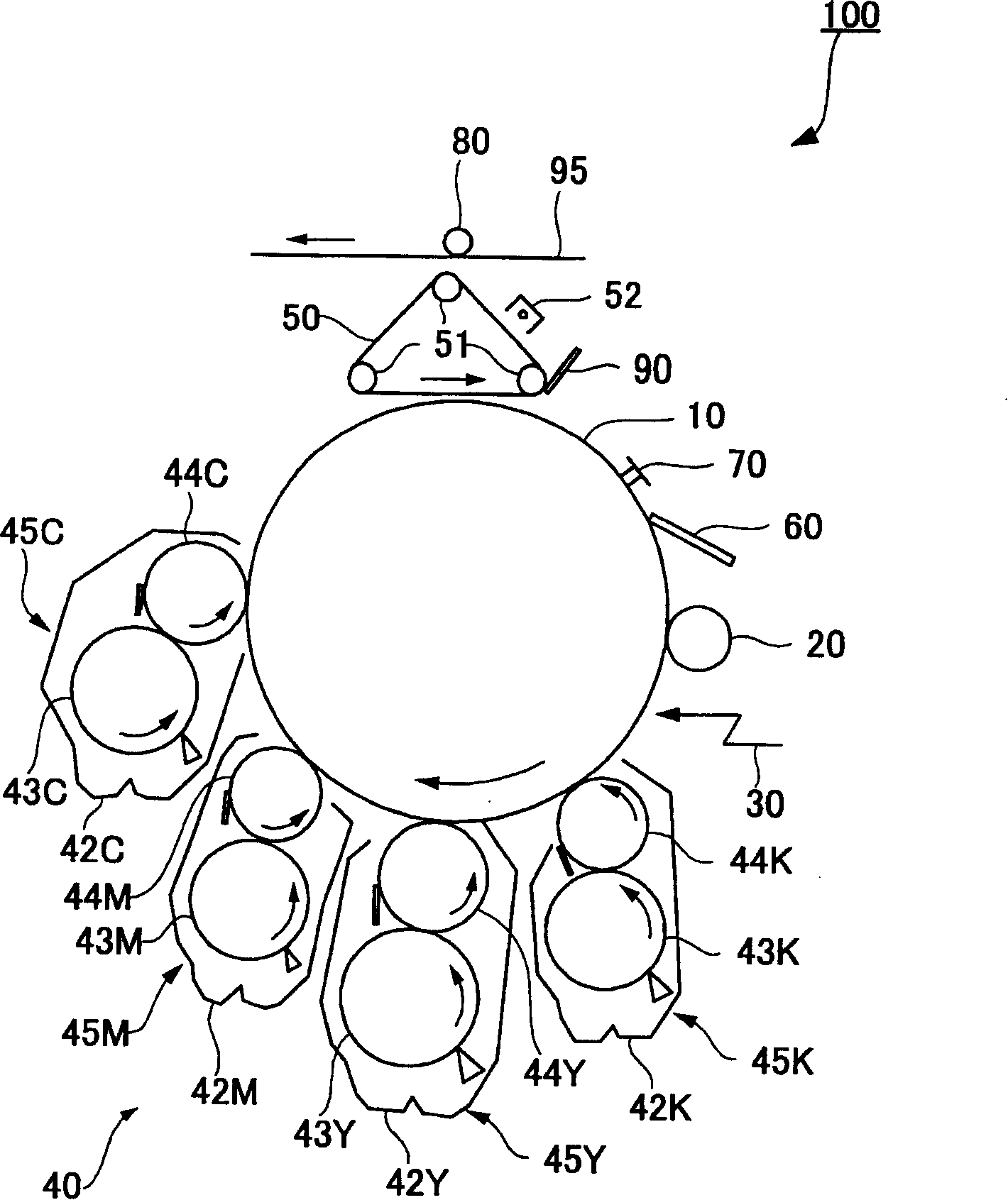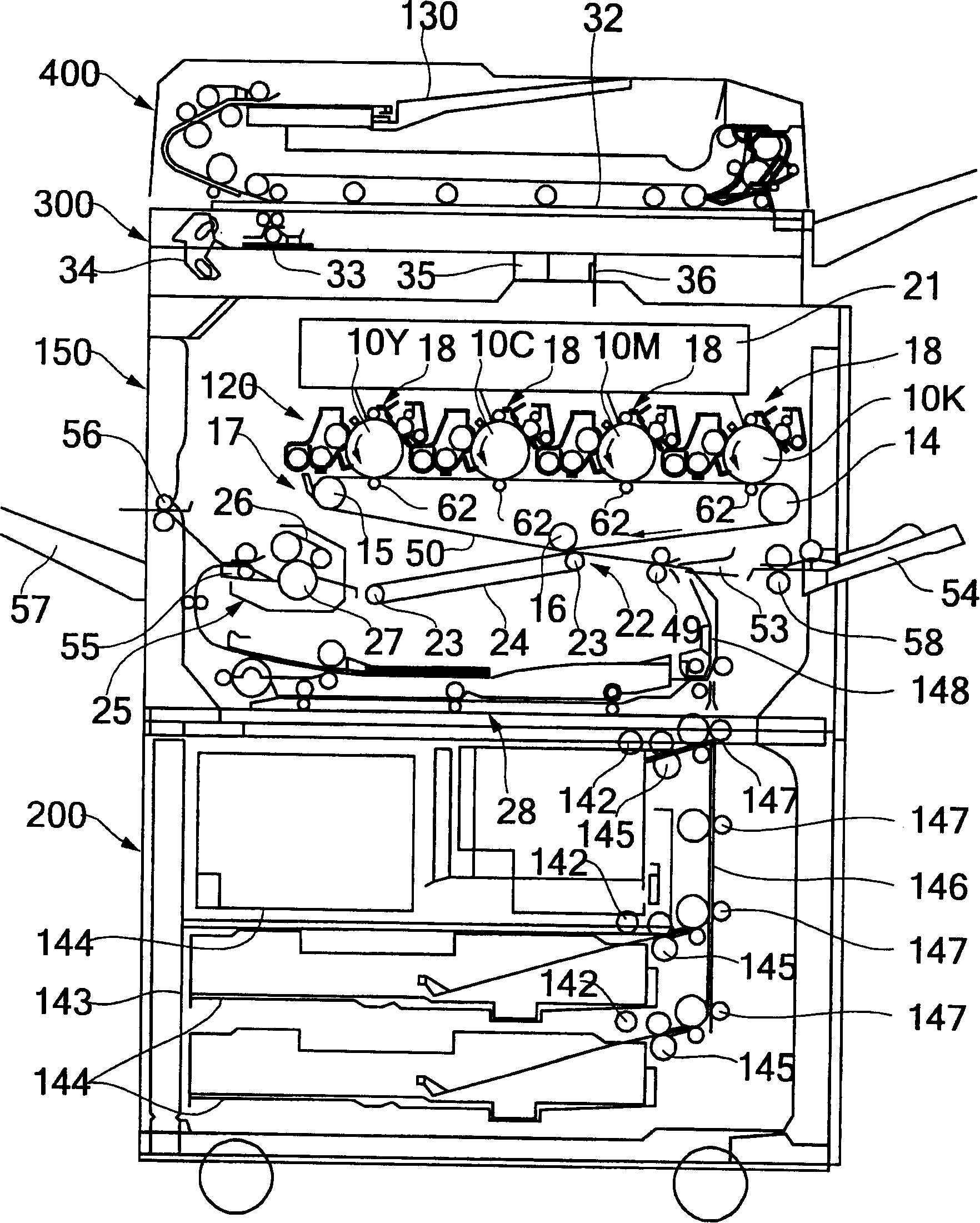Toner, method for its production and image forming method
A technology of toners and toner materials, applied in the field of toners, can solve the problems of narrow particle size distribution of toners, failure to provide such, easy to generate fog, etc., and achieve excellent charge stability, high image density, high definition effect
- Summary
- Abstract
- Description
- Claims
- Application Information
AI Technical Summary
Problems solved by technology
Method used
Image
Examples
preparation Embodiment 1
[0456] -Preparation of aqueous dispersion of wax (wax dispersion)(1)-
[0457] In a container, pour 200 parts by mass of paraffin (melting point 78°C), 10 parts by mass of anionic surfactant (NeoGen SC) and 790 parts by mass of water, heat at 95°C, and use a Gaulin Homogenizer at an output pressure of 560×10 5 N / m 2 It was emulsified and then quenched, thereby preparing an aqueous wax dispersion (wax dispersion) (1).
[0458] The volume average particle diameter (Dv) of the wax dispersion liquid particles in the obtained wax dispersion liquid (1) was measured using a particle size distribution analyzer (LA-920, manufactured by HORIBA Ltd.), and the volume average particle diameter of the wax dispersion liquid particles was measured by the laser light scattering method. The diameter (Dv) is 0.160 microns. In the wax dispersion particles, coarse particles having a volume average particle diameter (Dv) of 0.8 µm or more are present in a ratio of 5% or less.
preparation Embodiment 2
[0460] -Preparation of aqueous dispersion of wax (wax dispersion)(2)-
[0461] In a container, pour 200 parts by mass of paraffin (melting point 68°C), 10 parts by mass of anionic surfactant (NeoGen SC), and 790 parts by mass of water, heat at 95°C, and use a Gaulin Homogenizer at an output pressure of 560×10 5 N / m 2 It was emulsified and then quenched, thereby preparing an aqueous wax dispersion (wax dispersion) (2).
[0462] The volume average particle diameter (Dv) of the wax dispersion liquid particles in the obtained wax dispersion liquid (2) was measured using a particle size distribution analyzer (LA-920, manufactured by HORIBA Ltd.), and the volume average particle diameter (Dv) of the wax dispersion liquid particles was measured by the laser light scattering method. The diameter (Dv) is 0.130 microns. In the wax dispersion liquid particles, the proportion of coarse particles having a volume average particle diameter (Dv) of 0.8 µm or more was 3% or less.
preparation Embodiment 3
[0464] -Preparation of aqueous dispersion of wax (wax dispersion)(3)-
[0465] In a container, pour 200 parts by mass of carbonyl-containing wax (melting point 82°C), 10 parts by mass of anionic surfactant (NeoGen SC), and 790 parts by mass of water, heat at 130°C, and use a GaulinHomogenizer at an output pressure of 560×10 5 N / m 2 Under emulsification, followed by quenching, an aqueous dispersion of wax (wax dispersion) (3) was prepared.
[0466] The volume average particle diameter (Dv) of the wax dispersion liquid particles in the obtained wax dispersion liquid (3) was measured using a particle size distribution analyzer (LA-920, manufactured by HORIBA Ltd.), and the volume average particle diameter (Dv) of the wax dispersion liquid particles was measured by the laser light scattering method. The diameter (Dv) is 0.182 microns. In the wax dispersion particles, coarse particles having a volume average particle diameter (Dv) of 0.8 µm or more are present in a proportion of ...
PUM
| Property | Measurement | Unit |
|---|---|---|
| particle size | aaaaa | aaaaa |
| particle size | aaaaa | aaaaa |
| particle size | aaaaa | aaaaa |
Abstract
Description
Claims
Application Information
 Login to View More
Login to View More - R&D
- Intellectual Property
- Life Sciences
- Materials
- Tech Scout
- Unparalleled Data Quality
- Higher Quality Content
- 60% Fewer Hallucinations
Browse by: Latest US Patents, China's latest patents, Technical Efficacy Thesaurus, Application Domain, Technology Topic, Popular Technical Reports.
© 2025 PatSnap. All rights reserved.Legal|Privacy policy|Modern Slavery Act Transparency Statement|Sitemap|About US| Contact US: help@patsnap.com



